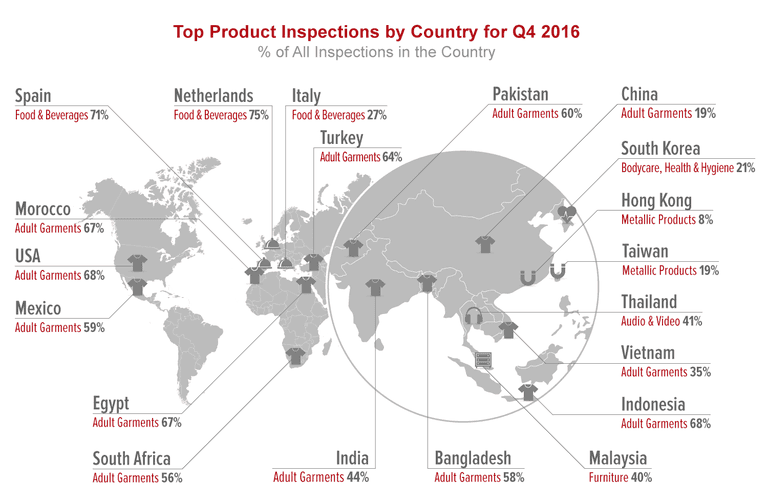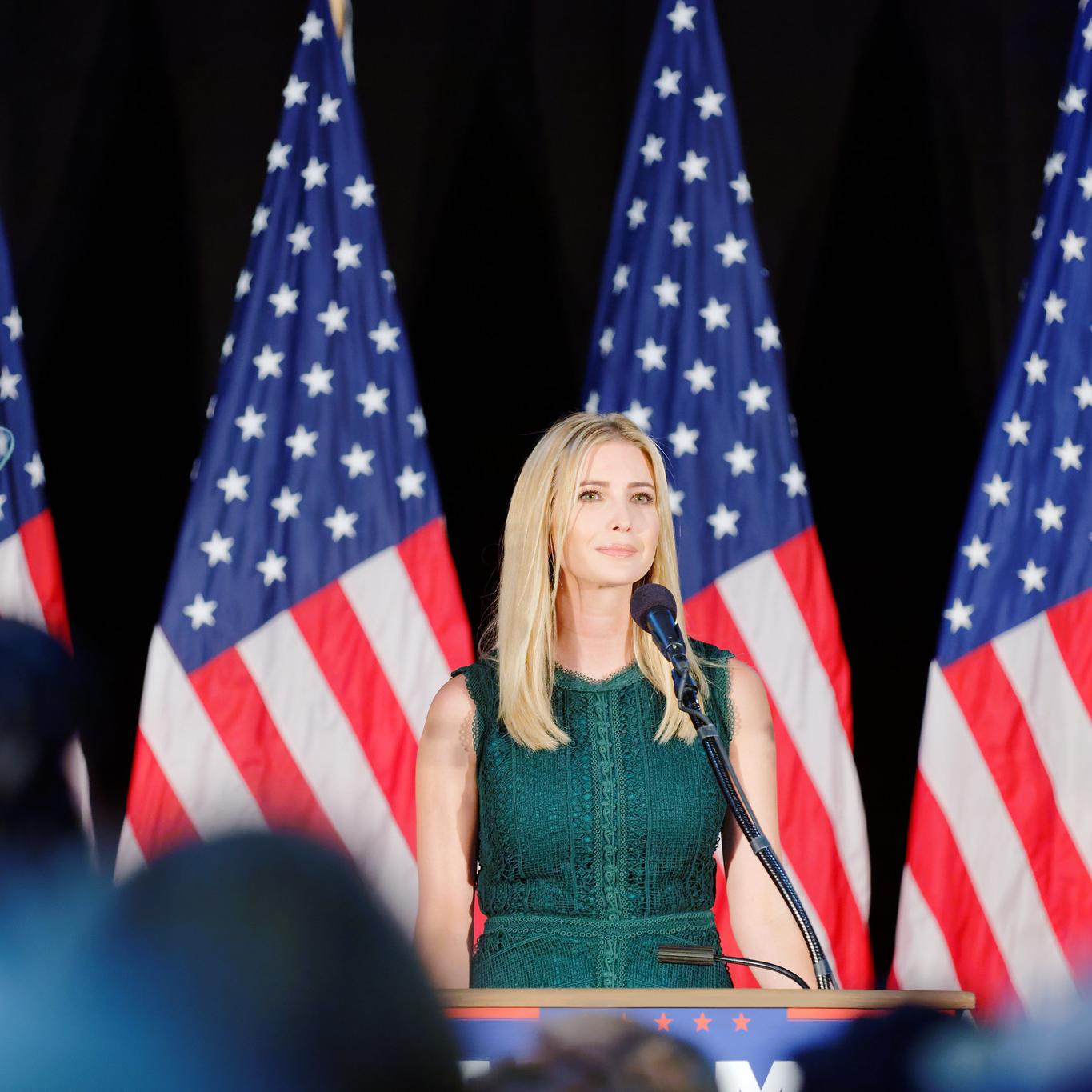Why The Conscious Consumer Movement Isn't Working (And How To Fix It)


By David Evans
If we want to save the world, we have to do better...
It’s clear that consumers are becoming more critical of of brands as they continue to educate themselves on the impact of their purchases and make better decisions. In turn, brands are working to meet this new demand from conscious consumers, but the transformation of supply chains may not be going quite as planned.
Suppliers are underperforming
To understand how suppliers are performing we can use data from third party inspection companies as an indicator. Third party inspection companies like AsiaInspection, SGS, and Intertek work as an objective middle-man between brands and suppliers to make sure suppliers are living up to the standards set by the brands they are working with.Brands commonly use third party inspection companies to make sure their prospective suppliers are complying with ethical and environmental standards before they start business. AsiaInspection regularly publishes summaries of their inspections and audits, and the statistics seem to put a damper on the conscious consumer's progress.
In 2016 only one third of ethical audits conducted by AI found suppliers compliant with minimum standards. The primary issues found included forced overtime, sexual harassment, child labor, forced labor, and exploitation of refugees.
This means that over 60 percent of suppliers inspected did not meet minimum ethical requirements - which aren't that strict. This is clearly a challenge for brands who want to take advantage of the benefits of outsourcing and still meet the ethical standards of their customers.
Environmental performance is another challenge slow to make progress. From the 2016 AI performance report,
“Environmental compliance was also uneven throughout global supply chains in 2016. According to AI data, over 36% of audits failed this year, a 5% increase from 2015.Simply put, if you’re a brand looking to outsource your production, finding a manufacturer that meets minimum environmental compliance isn’t going to be easy and the trend for the last two years shows that the pass rate it is actually declining.
Finally, the assessment from AI paints an unfortunate conclusion about the progress of environmental compliance altogether,
“Overall, many brands are not prepared to make a commitment for ISO 14001 compliance right out of the gate, instead choosing to aim for the minimum legal standards applicable in their sourcing country.”Given the hurdles to finding ethical and environmentally responsible suppliers it’s no surprise that brands are opting for the minimum environmental requirements to be compliant. These are usually local environmental laws that are much more relaxed in countries overseas, but we all know this is not nearly enough to ensure environmentally sound manufacturing processes.
ISO 14001, however, is the standard needed to raise the bar and offers a clear benchmark for brands, consumers, and suppliers alike to gauge performance.
What is ISO 14001?
ISO (International Organization for Standardization) is an independent NGO made up of 162 international standards bodies that develop standards. ISO standards represent the consensus of professionals from around the world on minimum requirements for quality, safety, and efficiency.ISO 14001 is their standard for environmental management systems. “It maps out a framework that a company or organization can follow to set up an effective environmental management system. It can be used by any organization regardless of its activity or sector.”
What are brands and consumers to do?
Brands should follow ISO’s environmental performance standards (as well as their ethical compliance standards), but they don’t have much incentive. A brand’s decisions are going to continue to be driven by money, so their only incentive to live up to tighter restrictions will have to come from their customers (assuming governments don’t raise the minimum compliance requirements).Unfortunately that's asking a lot from today's consumers. How many consumers know what ISO 14001 is and how many of them know how to tell if a product they are buying has come from a brand that meets these requirements?
Chances are it isn’t enough to have a significant impact on the way brands make decisions.
Understandably, today’s consumer is in a difficult place, because to make a truly impactful decisions they have to be quite educated about the product they are buying.
Right now conscious consumers are mostly relying on brand reputation and packaging, which is no longer sufficient. Most of the information about a brand’s reputation that consumers are exposed to is controlled by the brands themselves - packaging, CSR reports, and digital marketing channels like social media and their website.
Consumers only have a tiny window of clarity about a brand’s ethical and environmental performance through investigative journalism and third party eco labels. While eco labels - including ISO certifications - are an effective way for consumers to gain insight into a product’s ethics, the learning curve is steep.
We need to break through
We know that a growing number of consumer’s have a positive intention to sway the actions of brands, but their efforts are not translated through the supply chain nearly as fast as one would hope.This disconnect between the motives of conscious consumers and the actual impact of their purchases is a major problem. Until we can give consumers the information they need to make truly informed decisions, progress will remain slow and we can’t expect supply chains to reform any time soon.
Image Credit: AsiaInspection
David Evans is the founder of prch, a resource for eco-minded consumers. He is a minimalist, environmentalist, and conscious consumer with a background in environmental studies, conservation, and tech. Learn to improve your environmental and social impact @theprch.
How Companies Can Lead on Anti-Deforestation Efforts


Join Procter & Gamble, Charmin, Forest Stewardship Council US, Domtar, Rainforest Alliance, and TriplePundit on April 28th – Arbor Day! – at 9am PT / Noon ET on Twitter at #ForestryChat. We'll discuss the current landscape of responsible forestry management in the United States – and how you can make a difference.
Pressure, both from environmental groups and local communities, has been instrumental in nudging multinational companies to become more environmentally responsible. Consumer preferences are shifting as well, though most have made it clear that they only want environmentally responsible products as long as there is no impact on their performance and price.
Furthermore, the numbers make their own business case. According to the United Nations, raw materials have become more difficult to procure; and with the world approaching a population of nine billion by 2050, companies have to be smarter and more conscious about the materials they source for their products. Hence growing concerns over environmental degradation, especially deforestation, have led to a meeting of the minds of the world’s leading companies and non-profits. These trends have long been underway with in the consumer packaged goods (CPG) industry, which is a massive consumer of wood products such as paper.
Procter & Gamble is one company that has been able to improve its sustainability performance due to its collaboration with its suppliers and some of the world’s most recognized NGOs. To learn more, TriplePundit recently spoke with Tonia Elrod, P&G’s associate director of sustainability and communications, to learn more about what it takes for a company that operates in 80 countries to ensure it has a reliable supply of responsibly sourced paper.
“The bottom line is that we can accomplish more with our partners, who all have the same goals,” said Elrod, “It’s just that we all have different points of view.”
CPG companies like P&G always face fierce competition, on both pricing and product quality. The company’s suppliers, such as Domtar, often operate on very thin margins. And NGOs focus on ensuring that ecosystems and local communities do not suffer due to the world’s growing demand for pulp and paper products. Together, these organizations are partnering with P&G on one overarching goal: to increase the global supply of Forest Stewardship Council (FSC)-certified paper available for the company’s line of paper products.
"Our goal was to have 100 percent certified fiber, and we’ve accomplished that,” explained Elrod. “But we’d like to get to 100 percent FSC certified paper.”
Currently, P&G estimates that about half of its entire supply of pulp and paper is FSC-certified. Ideally, the company would like to source far more, but there is a huge hurdle: concerns over deforestation and land rights overseas have nudged consumers to demand more responsible products. Many companies are responding in kind, but there is just not enough paper that can meet such certification standards. And that is where the NGOs come in – they understand the world of forestry, small landholders and the concern of local communities. To that end, organizations such as WWF and Rainforest Alliance can do the heavy lifting to ensure that these new sources of pulp and paper are, in fact, responsible.
Several years ago, Domtar realized the need in increase the supply of FSC-certified paper. The Montreal-based company saw an opportunity with small landowners that comprise much of the forestry sector across the southeastern U.S. The result was the formation of the Four States Timberland Owners Association (FSTOA), which works with forest managers and provides them the necessary tools so that they can attain FSC certification.
Meanwhile, P&G saw the changes in the CPG market and realized it had to show that it could become a responsible corporate citizen. A sustainable supply chain was not a luxury – it made sound business sense. Domtar and P&G agreed to become corporate partners in order to boost the amount of FSC-certified pulp fiber in this region. It was not an easy task, as 75 percent of the forests in the southeastern U.S. are owned by small landholders – and most have holdings less have 100 acres. But five years after the FSTOA was formed, an additional 500,000 acres of forests are now certified with the FSC. Once these landowners could see the business opportunities they could gain due to the P&G brand, they could see how this collaboration presented itself as a strong business case.
But according to Elrod, collaboration goes beyond a company’s supply chain and any public-private partnerships. As the saying goes, collaboration is the new competition, so P&G says it is working not only with its competitors, but also beyond the CPG industry.
In a recent campaign, P&G partnered with one of its fiercest competitors, Kimberly-Clark. P&G has long vied for shelf space and market share with that company’s brands, which include Kleenex and Cottonelle. “But it was important to us that we worked together on a campaign to raise consumer awareness about FSC,” said Elrod. “Both companies want to drive consumer demand, but awareness is key if we’re going to increase that supply of FSC-certified paper.”
The partnership went beyond the CPG sector, and also included brands such as Patagonia, Pottery Barn, HP and furniture maker West Elm. The “One Simple Action” campaign educated consumers about the benefits of managed forests, including wildlife protection, the guarantee of indigenous people’s rights, a reduction in the use of chemicals, water quality and of course, deforestation.
Yet there is another reason why certification programs such as FSC are important. As the majority of forests here in the U.S. are owned by small landholders, profit margins on these lands are often thin. So as is the case with any commodity, farmers need a guaranteed price if they will continue to be willing and able to keep their title to their lands. The promise of a steady price for pulp and paper, which in turn allows P&G and other companies to maintain a regular supply of this certified raw material, can prevent the loss of land to other purposes that will not be as environmentally friendly.
“It’s important to note that if landowners aren’t getting value out of their trees, they may sell their land for an alternative use,” added Elrod. “We don’t want that land to be lost for another purpose, as it’s a form of deforestation if those forests end up as strip malls or housing developments.”
To Elrod’s point, if a forest is managed well, then that land devoted to timber ends up providing a renewable resource. She also cited a statistic often given by the American paper industry, which claims that over four decades after the first Earth Day was commemorated in 1970, there are now more 20 percent more trees across the U.S. The end result is that these trees sequester more carbon; Elrod noted that American forests are responsible for offsetting 13 percent of America’s carbon emissions.
In order for these campaigns and collaboration to work, Elrod explained that expectations and goals have to be clear at the onset. Some companies have very clear goals, but struggle when it comes to executing them. And other companies have the capacity and knowledge, but articulating an exact vision can present an enormous challenge.
“What makes all of this collaboration possible is a very clear end game,” insisted Elrod. “There has to be a clarity of goals, and a clarity of vision.”
Image credit: Leon Kaye
CVS Banishes Formaldehyde, Other Toxics From Cosmetics


Consumer and environmental organizations have been pressuring manufacturers for years to remove certain ingredients from their personal care products. Ingredients like parabens, phthalates and various formulations of formaldehyde are often used in cosmetics and are now considered suspected carcinogens and endocrine disruptors.
Last week consumer advocates received the clearest sign yet that their efforts are making a difference. CVS, which owns and operates some 9,700 pharmacies across the country announced on Wednesday that it would be pulling those products in its own line of cosmetics that contain those three chemical substances and “will stop shipping store brand products that don’t meet these standards to distribution centers by the end of 2019.”
CVS manufactures four product lines that it said will be affected by the change: CVS Health, Beauty 360, Essence of Beauty, and Blade. The company’s Promise Organic is prohibited by federal law from containing synthetic ingredients already and won’t be affected.
“Today’s announcement is a natural step in the evolution of our comprehensive approach to chemical safety,” said Cia Tucci, Vice President of CVS Health’s Store Brands and Quality Assurance Department. She credited the decision to the CVS effort to be responsive to consumer concerns and to ensure that the products it sells are “safe [and] efficacious." The company already publishes a list of restricted chemicals by product category on its website.
In 2005 the state of California passed a law requiring personal care product manufacturers to supply the state with a list of any products that contained ingredients it identified as toxic, including parabens, phthalates and formaldehyde. The Safe Cosmetic Act put the onus on manufacturers to not only ensure transparency, but to meet stringent reporting guidelines about its use and consumer risks.
In 2012, California voters took another step to strengthen requirements concerning toxic chemicals by passing Proposition 65. Under California law, manufacturers are required by law to warn consumers if the product contains harmful amounts of toxic ingredients. That added pressure has made some companies realize that many consumers really don’t want certain ingredients in their personal care products.
But the SCA and Prop 65 have also made it easier for consumer organizations and the state to go after companies that didn’t report the use of toxic ingredients. In 2013 the Center for Environmental Health sued manufacturers of 98 personal care products for not reporting the use of toxic substances on the label and to the state. None was manufactured by CVS, although some of those products had been sold in major pharmacies across the country.
Not surprisingly, an increasing number of companies are now dropping or limiting “unwanted chemicals” from their stores and product lines. In January Target announced it would be reviewing products that didn’t meet consumers’ ingredient and quality expectations, a step that Walmart has also endorsed.
CVS’ move represents a sizable effort in this arena. With more than 500 products to review, the company’s efforts demonstrate that consumer preferences are being heard loud and clear.
Ivanka Trump Dines With Chinese President Xi, Receives Chinese Trademarks


April 6 was quite the night for Ivanka Trump. Not only did she enjoy a wonderful dinner with Chinese President Xi Jingping featuring the scrumptious chocolate cake her father, President Donald Trump, couldn’t stop talking about, but she also acquired approval of three trademarks from the Chinese Foreign Ministry.
The trademarks are for Ivanka Trump’s line of handbags, jewelry and spa services. There is, however, controversy involving Trump’s uncharacteristically quick turnaround from application to trademark status.
Peter Riebling, a trademark lawyer, said trademark applications typically take 18 months to two years to be completed and issued. Riebling said Ivanka Trump’s company filed for about a dozen trademark applications in China in May and June last year. It hasn’t even been a year.
“What’s interesting about these applications is they sailed through incredibly quickly compared to what is normal in China,” Riebling told NPR.
Ivanka Trump officially stepped down from managing her fashion line in January but still owns and profits from the company. Riebling said he counted 182 pending or registered trademarks across 23 countries. He said while it is a smart business move to push for trademarks, the speedy turnaround is “very suspect.”
The AP reported:
Using the prestige of government service to build a brand is not illegal. But criminal conflict-of-interest law prohibits federal officials, like Ivanka Trump and her husband Jared Kushner, from participating in government matters that could impact their own financial interest or that of their spouses. Some argue that the more her business broadens its scope, the more it threatens to encroach on the ability of two trusted advisers to deliver credible counsel to the president on core issues like trade, intellectual property and the value of Chinese currency.
Ivanka Trump, meanwhile, is blossoming into something of an icon in China. An online fan club created by Chinese Trump lovers, “Goddess Ivanka” already has a 12,700-person following. She’s gained quick adoration from Chinese fans because of her elegance, respect for Chinese culture and commitment to raising her children to speak Mandarin.
During the same visit Ivanka, Trump’s five-year-old daughter Arabella performed a traditional Chinese song for Xi and his wife. Arabella has been learning Mandarin since she was 18 months old and has gained superstar status in China after her mother posted videos of her reciting a Chinese poem and singing a song to ring in the Chinese New Year.
Trump, a businesswoman by trade, seems to place a high value on Chinese-American relations. The AP reported that her eponymous company officially has 16 registered trademarks in China and more than 30 applications still pending for approval, according to China’s Trademark Office database. Five trademarks have been granted preliminary approval since her father’s inauguration.
Former chief White House ethics lawyer under the Obama administration Norman Eisen told the AP that Trump and her husband, Kushner, have so many ties with China that it would be best for them to consider “stepping away from China matters.”
Chinese Foreign Ministry spokesman Lu Kang said China ensured the press at a briefing last week that China handles all trademark issues according to the laws and regulations. He dismissed any accusations of foul play with the three timely trademark approvals to be nothing more than “gossip.”
Image credit: Flickr/Michael Vadon
UK Study: Fair Trade Cotton 1/5 Ecological Impact of Conventional Textiles


According to the United Kingdom-based NGO Fairtrade Foundation, the environmental and social footprint of fair trade cotton has one-fifth the impact of conventionally sourced cotton. And in a warning to the global textile and apparel industries, the way in which most cotton is currently produced worldwide threatens the long-term viability for this sector.
In an article posted on the foundation’s web site, Subindu Garkhel, the organization’s cotton manager, noted that the problems the global fashion industry exacts on people and planet are endemic throughout the sector’s entire supply chain. But the worst affects of the industry are imposed on the farmers that produce this coveted crop. Garkhel noted that while most global commodities are far more expensive they were than a decade ago – despite the recent slump in prices – the cost of a t-shirt at most retail chains is remarkably cheaper now than in 2007.
A quick check of the world’s fast fashion chains verify Garkhel’s claim. Visit your local Uniqlo, for example: adult cotton t-shirts at its Union Square location in San Francisco location are currently $3.99; and currently the company’s tagline is “Fresh Tees for Miles.” H&M is currently touting t-shirts and polo shirts as cheap as $5.99 – or a different shirt for each day on the week thanks to the company’s offer of free shipping for a minimum $40 purchase.
So what’s going on? According to Garkhel, while retailers have focused on improving the lot of garment workers, especially in Bangladesh, farmers have been largely left out of the equation. Much of the problem is rooted in logistics. In India, where Fairtrade Foundation’s study focused, the industry is dominated by small landholders who are at the mercy of suppliers. Garkhel claims that over a million people farm cotton, a total that exceeds the number of cocoa, coffee and sugar growers combined. Getting through to these citizens is Herculean task; and in fairness to fashion companies, this makes 100 percent traceability a challenge; nevertheless, advances in technology, not to mention these companies' profits, behooves the world's leading fashion houses to improve their performance.
To that end, Garkhel and Fairtrade foundation are pushing the global apparel industry to improve its transparency throughout its supply chain. Indeed, companies are continually improving the social and environmental performance of the factories from which they purchase their garments, especially as the four-year anniversary of the Rana Plaza collapse approaches this Wednesday. Nevertheless, too many other steps in the global cotton supply chain have been overlooked, including farming, ginning, spinning and weaving.
The study surveyed the households of small farmers across India, which depending on the source cited, alternates with China as the world’s largest producer of cotton. Fairtrade Foundation then applied an in-house valuation tool to transform that qualitative information into quantitative data in order for the foundation to make the business case to cotton suppliers, garment manufacturers and retailers. This data, which has not yet been publicly released, indicated that fair trade cotton shows a 97 percent improvement in social performance and a 31 percent increase in environmental sustainability performance.
The bottom line, according to the foundation, is that the improved wages paid for by fair trade premiums have a reach that extends far behind a boost in salary. The elimination of child labor, and a reduction in the amount of overtime worked, also result in social benefits. Furthermore, the payment of fair trade premiums also provides a more reliable source of income, as opposed to the farming of conventional cotton, which leaves farmers more vulnerable to price volatility.
And on the environmental front, fair trade cotton outpaced conventional fiber by just about every metric, including land use, water consumption, emissions and soil health. The only exception was for land use, as the study claims that fair trade cotton has a slightly lower yield per acre than conventional cotton.
In sum, Fairtrade Foundation insists that a fair and just price paid for cotton provides numerous benefits: the empowerment of more women, a better quality in the final cotton product and the expansion of education in communities that are reliant on cotton production. And for fashion companies that are only one human disaster away from losing trust, the support of a fair trade model could also enhance their brand reputation – and help ensure the long-term success of their business.
Image credit: ILEIA/Flickr
‘Granny Pods’ Offer a Tiny Home Alternative for Senior Citizens


Wondering where you may live when you are well past retirement age? Virginia-based MEDCottage says it has a potential solution: the “granny pod,” which can best be described as a “tiny house” for senior citizens, an alternative to assisted living.
We don’t know if urban areas will truly become “smart cities,” but one thing is for certain: they are definitely aging. Currently Americans aged 65 or over are about 15 percent of the nation’s population. That ratio will increase to 20 percent, or from about 50 million to 70 million senior citizens, between now and 2030 as the tail end of the baby boom generation enters retirement age.
This demographic shift is already posing plenty of challenges to American society, from health care to pensions to affordable housing for a much larger elderly population. Plus, we’re living longer: Pew Research Center projects that the number of centenarians (people 100 years of age or older) will increase 800 percent by 2030.
So where are our parents, and then us, going to live? One massive problem is what occurs to people as their health and mobility decline. The industries that cover “rehab centers” or “skilled nursing facilities” are certainly profitable, though the reality of these places is a far cry from their literal description. If you think you want, or will need, to live in a pleasant retirement community or assisted living complex as you enter those sunset years, you had better start saving now: currently the average monthly price is about $4,500, though better places will cost more; add the services needed for memory care, and that monthly fee will spike higher.
MedCottage says its options are a far more affordable and desirable alternative to nursing homes. Its marquee product, the CottageClassic (though still referred to as the “granny pod”) is a modular home that can be assembled in one’s backyard. Think of it as a tiny home but also decked out with smart devices that make living in one far more elderly-friendly.
Knee-high lights prevent residents from tripping over rugs or objects on the floor; a computerized system would remind the resident to take those meds and offering games and movies; web cams at ankle height can alert loved ones if something is amiss, yet ensure privacy; and in extreme cases, a lift could even move the occupant from bed to bathroom, negating the need for a 24/7 caregiver. Modern high-tech gizmos are complemented with old school safety features such as hand railings and padded floors for joint comfort. Covering less than 300 square feet, each CottageClass has a bedroom flanked by a small kitchen and bathroom.
For now, this “granny pod” is available only in the state of Virginia - though the company also sells plans if somebody wants to attempt to build one on his or her own. MedCottage says they can be easily installed in a backyard, then connected to a property’s sewer and water lines.
The gut reaction of some may be, “great, just warehouse the parents or in-laws in the backyard.” The granny pod does have some downsides. Entrants to these homes are immediately greeted by the sight of the bed. With little room for anything else but a small sofa and guest bed in the event a home healthcare worker is needed overnight, there is no room for entertaining. Nevertheless, the appeal of having that loved one nearby could be an easy decision for many families. Furthermore, the reality is that many retirement and assisted living centers are far from relatives’ homes, as they are usually in areas where the cost of land and construction is cheaper than in city centers.
The problem with the scaling up of granny pods, of course, is that as more suburban developments are managed by homeowner associations (HOAs), families are going to find it almost impossible to plunk one of these homes in their backyards. In addition, many cities and towns also have restrictive zoning laws, or lengthy wait times for building permits. On that point, MedCottage says it offers a couple alternatives. But housing a parent in the garage or in an RV could be a non-starter for many families.
The “Living Roo” purports to be a happy home that can be constructed within a two-car garage, and is complete with framed high-definition monitors that give the appearance of a gazing out a window. And the “Mother Ship,” which MedCottage defines as “zoning soft,” is a housing option designed on an RV platform that can be leased short- or long-term, and can also be customized for either extended care or for short-term rehabilitation care.
For many of us, these options hardly seem ideal. But give MedCottage credit for trying to offer an alternative to expensive elder care. Many citizens are currently struggling with the high cost of living in many cities. We are going to face even a bigger shock a few decades down the road, when the vast majority of us will be earning far less, yet will need more services if we will maintain any semblance of a quality of life. At a minimum, MedCottage should send citizens and community leaders the message that we need to be more creative as we figure out how to house and comfort an increasingly older population.
Image credits: MedCottage/Facebook
Minority Business Owners Still Face Discriminatory Lending


Access to credit is a fundamental pillar of modern capitalism, but some evidence suggests that not everyone in the U.S. has equal access to loans. Ethnic and racial minorities in particular are often excluded, according to a recent report issued by Chicago-based Woodstock Institute.
The result is a huge hurdle for communities that are struggling to boost jobs, revitalize neighborhoods and create a more resilient local economy. And for entrepreneurs and business owners, alternative sources such as financial technology (fintech) lenders, as well as other options within the “shadow banking” sector, are often far more expensive and impose more onerous terms.
This current problem is analogous to the “redlining” crisis a decade ago, during which it became clear that racial and ethnic minorities often paid both higher interest rates and more punishing fees for home mortgages. Those discrepancies were revealed as the American financial industry teetered closer to the subprime mortgage fiasco. That domino eventually led to the near collapse of the U.S. economy as some analysts suggests it lost $22 trillion in value between 2008 and 2009.
The survey looked at Community Reinvestment Act (CRA) data since 2001, notably loans that were made under $100,000, which have comprised 92 percent of all CRA-reported loans. These loans are often the most critical step for small businesses and start-up firms, and in general, such lines of credit are relatively small. CRA loans that were reported in California during 2014, for example, averaged just over $12,000. And most of these CRA loans are made through financial institutions, whether they are the large national banking corporations or community banks.
Woodstock Institute researchers compared CRA data to recent U.S. Census statistics in the cities of Buffalo, New York and New Brunswick, New Jersey. In New Brunswick, businesses located in moderate-income neighborhoods received about two-thirds of the loans for which they applied, and about that same ratio for the dollar amount requested (64.4 percent) during the loan application process. But businesses in lower-income areas only scored about 40 percent of the loans for which they applied, for an average dollar amount of less than 40 percent of what was requested.
Numbers presented for Buffalo tell a similar story. Businesses is low-income areas generated almost 15 percent of all the commerce in the region from 2012 to 2014, but only received 6.3 percent of the region’s total dollar amount of CRA loans during that time. If those same businesses had received a proportional amount of lending from conventional banks, there would have been almost 3,300 more loans with an additional infusion of $43 million in cash.
At a macroeconomic level, small business lending has been on a roller coaster this century. Small business lending grew at a rapid pace between 2001 and 2007, only to crater during the financial crisis and its aftermath. CRA lending increased again after 2010, but by 2014, the total number of such loans was only at 60 percent of its 2007 peak.
But low-income areas nationwide find themselves stifled due in part to unreliable sources of credit. These neighborhoods generated 9.3 percent of all commerce nationwide, but only received 4.7 percent of all lending. From the Woodstock Institute’s point of view, CRA loans had been issued at a more equitable rate between 2012 and 2014, these areas could have benefited from an additional $8.8 billion in investment.
Those figures correlate with lending practices in neighborhoods that were predominantly home to racial minorities or Hispanics. The amount of business generated in such neighborhoods in New Brunswick, for example, received roughly three-quarters of the loans needed compared to the amount of total business they generated. If CRA lending had been at a more level playing field between 2012 and 2014, an additional $183 million in loans could have supported businesses during those years.
The study is a black eye for the CRA, which was passed 40 years ago to eliminate discriminatory lending practices in low-income neighborhoods.
To change these vast discrepancies in lending practices, the Woodstock Institute is recommending a variety of changes, which naturally will be a tall order during the era of U.S. President Donald Trump. From these researchers’ point of view, CRA examiners need to be more rigorous in how they assess banks’ lending practices in these neighborhoods. In addition, small business lenders should be more transparent about their loan data, as is required under the Dodd-Frank Act – legislation that the current administration wishes to weaken, if not eliminate completely. Furthermore, the survey’s authors insist that the fintech sector be held to the same rules as banks, as they are clearly benefiting from the surging number of loans and other forms of credit made to small businesses across the country.
The Main Street Alliance estimates that the fintech and shadow banking sectors have seen the amount of their investments soar to $12 billion in 2015 from $930 million in 2008, and hence suggests that all lenders should be held to the same set of regulatory rules. Regulators also need to hold all financial institutions accountable, as there must be fairness in all lending so that no citizens are denied opportunities based on the color of their skin or ethnic background.
Image credit: Zen Skillicorn/Flickr
Earth Angel Greens TV and Movie Sets Nationwide


By Beth Bell
There are some real powerhouses in the world of sustainable tv and film production. To highlight the stellar efforts in this sector I spoke to Emellie O’Brien, the woman behind the one and only official New York City event that commemorates and celebrates Earth (angel) Hour.
Emellie O’Brien is the founder and president of Earth Angel, the only sustainability consultancy servicing film and television production on the East Coast. For over five years, O'Brien has become a leading expert in the field of sustainable entertainment production through her work with studios such as Paramount, Sony, HBO, CBS Television, Disney, Amazon Studios and Marvel Studios. Her sustainability leadership on The Amazing Spider-Man 2 contributed to it being acclaimed by some as the most eco-friendly blockbuster in Sony Pictures’ history. She is the author of “Going Green & Saving Green: A Cost-Benefit Analysis of Sustainable Filmmaking” – a Producer’s Guild of America Green report.
Earth Hour is a worldwide grassroots movement uniting people to protect the planet, and is organized by World Wildlife Fund (WWF). Engaging a massive mainstream community on a broad range of environmental issues, Earth Hour was famously started as a lights-off event in Sydney, Australia in 2007. Since then it has grown to engage more than 7,000 cities and towns worldwide, and the one-hour event continues to remain the key driver of the now larger movement.
EARTH (angel) HOUR is a tribute to the World Wildlife Fund’s Earth Hour. As New York City’s first organized Earth Hour event, attendees get to participate in a global movement, celebrate achievements in sustainable production, and support local environmental efforts. The event includes food and drink, live entertainment, door prizes, as well as a lights-out ceremony.
TriplePundit: This was your 3rd year organizing Earth (angel) Hour. What are some significant changes about this year's event compared to past years?
Emellie O’Brien: Even in the early stages of planning for our 3rd annual Earth (angel) Hour, I knew that I really wanted to bring it up a few notches. Years one and two were a great chance for us to test the waters and see all of the possibilities for this event. Our main goals this year were to heighten the visibility of Earth Hour and the event in New York and engage more participants and attendees. We were really able to meet and surpass these goals by partnering with Mitchell Grant, the Operations Manager of RXR Realty's Starrett-Lehigh Building in West Chelsea. This partnership allowed us to not only engage more attendees, but to engage the entire Starrett-Lehigh community and other buildings in the RXR network.
3p: Attendance at this year's event was four times year one's. Why do you think it's important to continue bringing awareness to Earth Hour?
EOB: Earth Hour is such an important movement because it stretches across borders and shows people that they have the power to bring change to their own communities as well as the global community. Earth Hour famously started off as a grassroots movement and, especially in times like these when many people feel that their government is not working for them, it is imperative to remember that they're not helpless and that they themselves can be vehicles for change. Another great thing about Earth Hour is that instead of highlighting all of the negativity associated with climate change, it helps people to celebrate all of the amazing work and progress that is being made in the field of conservation.
3p: The fantastic vantage point of the event venue showed that very few NYC buildings went dark for Earth Hour. What more can entertainment media do to bring awareness to this event?
Yes, Canoe Studios in the Starrett-Lehigh building was a great place for us to see the Empire State Building go dark for Earth Hour but it absolutely highlighted how far we have to go. It's always really helpful to have actors as environmental advocates and support causes like Earth Hour but we've found that there are some other ways to engage the buildings that make up New York City's skyline. For example, Mitchell Grant is starting to put together an organization called the West Chelsea Energy Alliance (WCEA) that will encourage buildings in the neighborhood to not only support climate action but participate as well. We all know that buildings in New York use huge amounts of energy but I don't think even Leonardo DiCaprio could get them to reassess their energy usage, that decision to make a change has to come from within and that's what WCEA is working to do.
3p: Have you seen high profile participation change over the last few years? I'm thinking of when Amazing Spider-Man 2, which you worked on to great success, did a whole media/PR blitz around Earth Hour.
EOB: Every year the movement is certainly growing. I was fortunate enough to have worked on the Amazing Spider-Man 2 when Sony made Spider-Man the first superhero ambassador of Earth Hour, which was really my impetus to bring Earth Hour to New York in a more organized way. Hopefully we can find some more superheroes who are up to the task in the coming years.
3p: Given the political climate in the U.S. at the moment, as a sustainable business leader, how do you think we can combat inertia and climate change fatigue on the part of entertainment (and other) businesses business leaders and the general public?
EOB: I think the current political climate has a lot of us sustainable business leaders feeling helpless in the face of such adversity. But this is precisely when sustainable business leaders need to come together to combat this feeling of helplessness by informing and empowering consumers. In the entertainment industry, this can play out in different ways. While consumers will not necessarily make a decision to consume content because it is sustainably produced, productions that make efforts to produce content in an environmentally conscious way should promote their efforts and share the data on their impact to encourage other productions to do the same. At the end of the day, it takes collaboration, education and inspiration to overcome these kinds of seemingly impossible obstacles.
3p: The Starrett-Lehigh building management wes very engaged in running the building sustainably. What are your thoughts regarding personal, localized and city level responsibility to help mitigate climate change and make public shared spaces more habitable in the long term?
EOB: When it comes down to it, we are all just individuals sharing a city and it is up to all of us at every level to work towards addressing the issues of climate change. I think there’s enormous opportunity to further the climate change mitigation discussion on the local city level because you can target issues that are specific to those communities. Whether it’s air pollution, land degradation or water shortages - municipalities facing these problems are poised to address them best. Ideally individuals, businesses and local government will lead the way and engage their peers and communities in these actions.
3p: In other words, if you're a production heavy city, sustainability initiatives can be pushed forward by the municipality, if it's not happening on the studio, production company, or initially the production level. Have you found this to be true in your experience? The New York City Mayor's Office of Media and Entertainment is a great example of the City of New York pushing forward new standards as far as sustainability in the production world. Earth Angel is currently working with MOME to develop NYC Film Green, a first-of-its-kind designation that recognizes the work the productions put in to be more sustainable and mindful of their impacts. This designation aligns with Mayor DeBlasio's OneNYC plan to make New York the most sustainable big city in the world and a global leader in the fight against climate change. The complexity of sustainability in the entertainment industry will ultimately require ALL stakeholders to come together on this issue. From businesses to government officials to entertainment professionals to non-profits, concerned citizens and more, we need to engage more of these diverse interest groups in order to see significant advancement and progress.
Photo credits:1,2,4,6- Mohammed Sadek, 3-Hans Glick, 5-EcoDeo/Daniel Feighery
Beth Bell is Founder + President Green Product Placement
Responsible Business Week: showcasing companies that make a positive impact


150 French corps required to report on human rights and environmental policies

